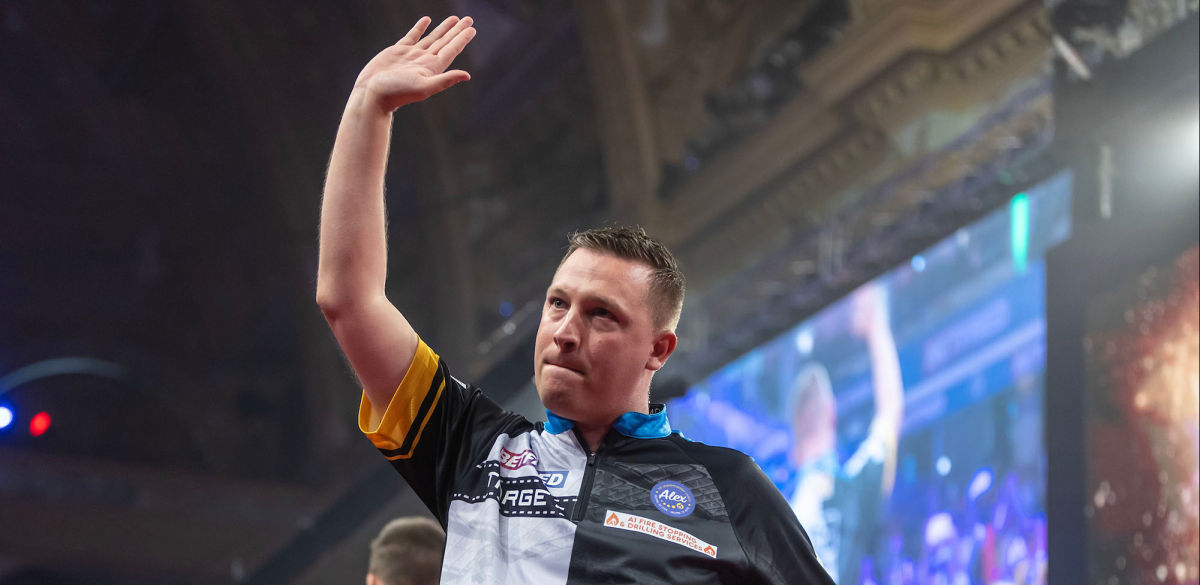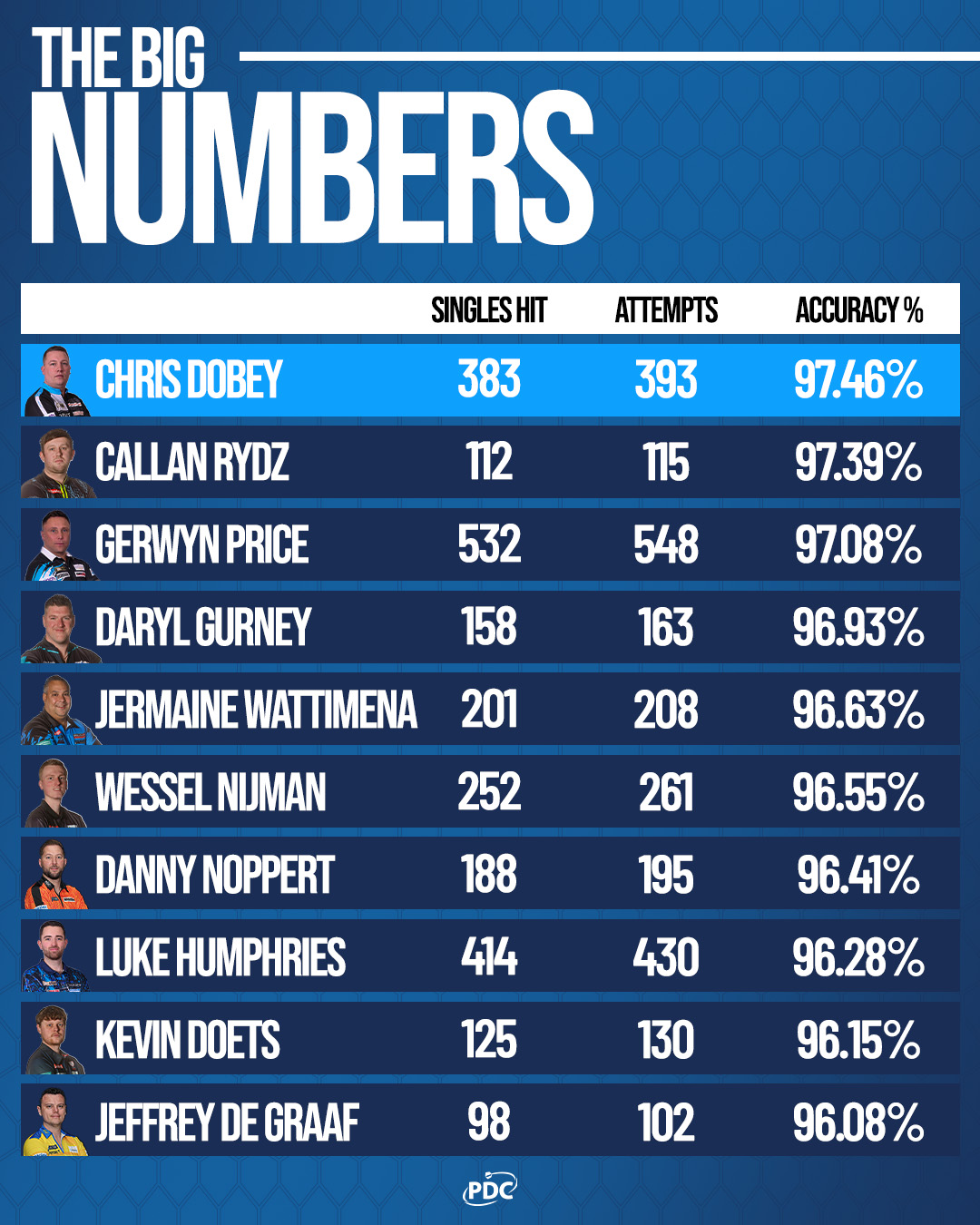
In his latest column, PDC Stats Analyst Christopher Kempf analyses which Tour Card Holders have been most adept at hitting the 'big number' in 2025.

Rob Cross' route to the Hungarian Darts Trophy title on Sunday afternoon was derailed when, in a match against eventual champion Niko Springer, Cross missed three consecutive big numbers, scoring 12 points from 60 and attempting zero doubles.
His third dart was admittedly thrown with no real precision or care due to the frustration of missing the first two, but Cross, whose accuracy on big number attempts approximately matches the PDC average, would have 5000:1 odds against three consecutive misses.
Springer would have beaten Cross without 'Voltage's disastrous visit, but the bizarre Budapest blunder illustrates that even the best darts players in the world can struggle to hit the biggest target on the board.
The 'big number' - the largest segment on the board - is nine times larger than a treble and eighteen times larger than the bullseye.
Since professional players can hit the former 35% of the time and the latter 20% of the time, it stands to reason that a player who makes their living throwing darts should be almost perfect when aiming for a comparatively huge target.
So why are many players so ineffective at hitting it, if they can hit minuscule targets with such regularity?
On stage in the PDC, one out of every 18 darts thrown at a single "big number" fails to hit its target.
A player is not always 'at fault' - blockers in the path of a speeding dart lower a player's culpability for a miss.
Furthermore, not every miss spells disaster; the most common miss involves hitting double 20 when aiming for the single, and so long as a player is as comfortable with attempting double 10 as with double 20, such a mistake amounts to a minor inaccuracy ultimately irrelevant to the outcome of the leg.
But in most cases, failing to hit the intended target means fewer darts at double with which to win a leg, attempting an awkward or unusual double, or - at worst - busting one's score.
Regardless of the outcome, it is usually apparent, given the player's preferred doubles (or their reaction after the dart is thrown) when they have missed.
The PDC's best 'big numbers' hitter of 2025 thus far has been Chris Dobey, with 97.5% accuracy - only one miss in 40 attempts - on big numbers.
Hitting double 14 instead of the single against Danny Noppert in Budapest contributed to his 6-2 loss to 'The Freeze' this past Sunday, but it was only his tenth miss of the year from nearly 400 attempts.
With his first darts of visits, Dobey has hit his big number target 154 out of 155 times.
Gerwyn Price has accumulated even more attempts overall (548) and still maintains a 97.1% accuracy rate, whilst Callan Rydz has not missed a big number on stage or in a streamed match in more than four months.
And while Luke Littler is breaking all records for hitting trebles, his 94.4% accuracy on big numbers is remarkable for being unremarkable - totally consistent with the PDC average for stage players.
The difference between the best and the worst hitters of singles in the PDC is barely 7% - the least accurate players, almost without exception, still hit their targets 90% of the time.
Players throw, on average, less than one dart per leg at a big number. With so little to be gained from being the best in the world at hitting big numbers (relative to being the worst), why does this statistic matter?
If it is a bad predictor of a player's skill, it may nonetheless be an interesting measure of a player's focus and consistency.
The prospect of doing something easy, with a success rate of 95%, certainly is not exciting in the context of a match full of 180s and difficult checkouts.
Some players neglect this aspect of the game, while some devote the attention needed to do it properly - and save themselves considerable difficulty in the process.
Follow Christopher on Twitter @ochepedia